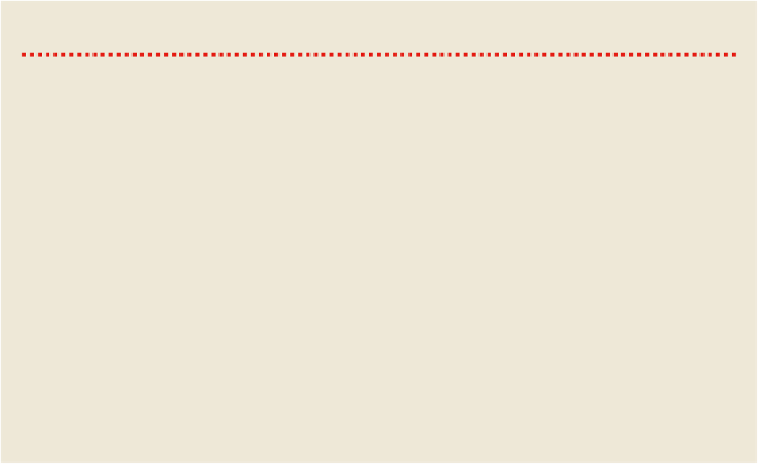Travel Reference
In-Depth Information
city limits. The best curated section is
Lanna art
, which displays a selection of Buddha im-
ages in all styles. Apart from this exhibit, the museum is a bit lacklustre.
Huay Teung Thao Reservoir
(admission 20B; 8am-sunset)
Thais embrace reservoirs as recreational retreats, not just as
pieces of infrastructure. A common reservoir activity is to lounge by the water in floating
bamboo huts and snack on fried bugs. Huay Teung Thao is about 12km northwest of the
city off Rte 107 (follow signs towards Mae Rim).
RESERVOIR
PRINCESS BRIDE
Much like a Brothers Grimm tale, the life story of Princess Dara Rasmee is rich with political intrigue, surprise
twists and even a happily ever after. She was born in 1873 when Chiang Mai was still part of the independent
Lanna kingdom; her father was Phra Chao Inthawichayanon, the last Lanna king. As a gesture of alliance, her
father sent her at the age of 13 to Bangkok to live in the court of King Chulalongkorn. She participated in the top-
knot ceremony along with the other royal children, but was taken as a consort by the king at the age of 14. The
engagement was viewed as a political move to unite the two royal houses against potential British intrusion,
based upon rumours that the British monarch approached the Lanna king with interest in his daughter.
She was described as being very beautiful and was regarded as one of the king's favourite consorts (he had
more than 100). Unlike other female residents in the royal compound, Dara Rasmee did not dress in Siamese
fashion but continued to be a Lanna woman, wearing her long hair in a bun and dressing in northern textiles. She
also continued to speak the northern dialect with her entourage and was the inspiration for a Thai adaptation of
Madame Butterfly
in which a Siamese man falls in love with a Lanna woman. Dara Rasmee gave birth to a
daughter in 1886 but the child did not live past the age of three.
Prior to his death in 1910, King Chula gave Dara Rasmee the honorific title of Phra Raj Jaya, which elevated
her to the status of an official royal wife, the only royal consort to receive such an honour. She is regarded by his-
torians as being a vital cultural and personal bridge between what were then two foreign groups: central and
northern Thais.
She returned to the north in 1914 and lived out her days at Darapirom Palace (
Click here
). During her 'retire-
ment', she cultivated roses in her garden, revitalised Lanna arts and culture, and helped establish the local longan
industry. She died of consumption at the age of 60 in 1933.
Darapirom Palace
( 0 2218 3635; Mae Rim; admission 20B; 9am-5pm Tue-Sat)
The last chapter of Lanna history has
a comfortable home in this former royal residence outside of Chiang Mai, in the northern
suburb of Mae Rim. This stately teak house built in the neocolonial style of the early 20th
century was the home of Princess Dara Rasmee, the daughter of the last Lanna king. Her
personal effects and furnishings along with English signs describing her life are on dis-
play. Catch a
sŏrng·tăa·ou
to Mae Rim police station and follow the signs from there; it is
about 1.5km from the main road on the grounds of a Thai military base.
MUSEUM




